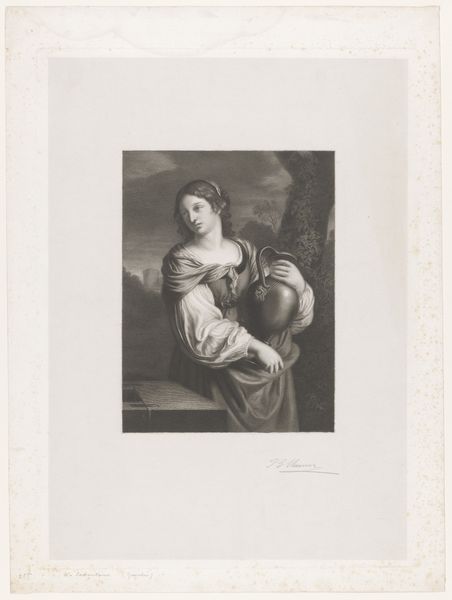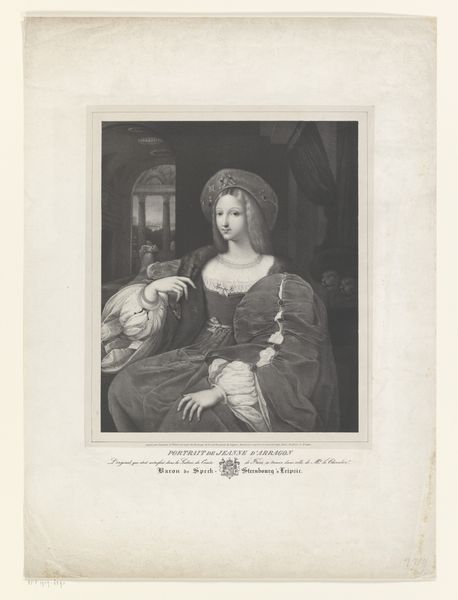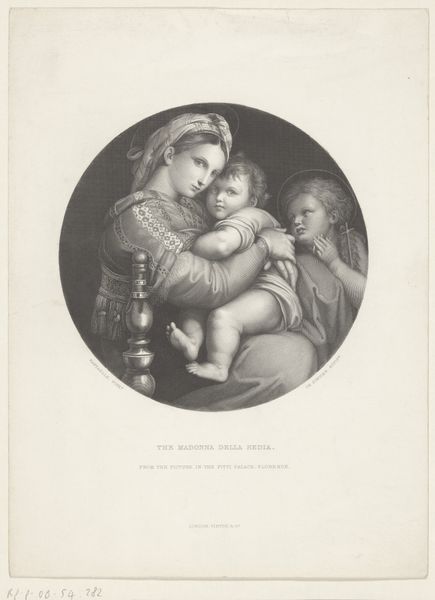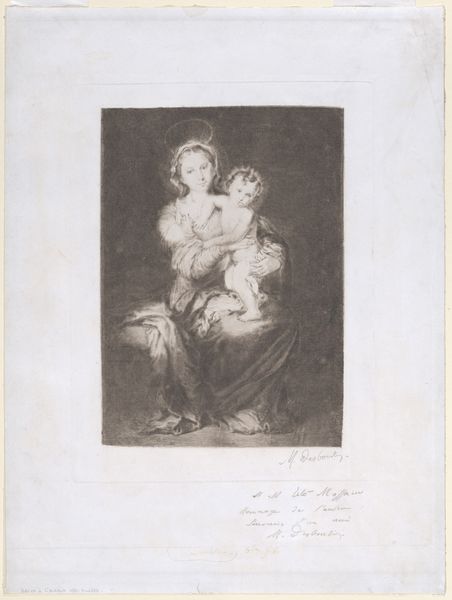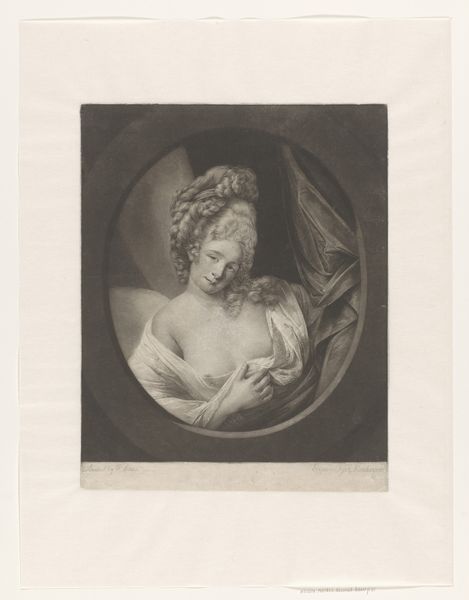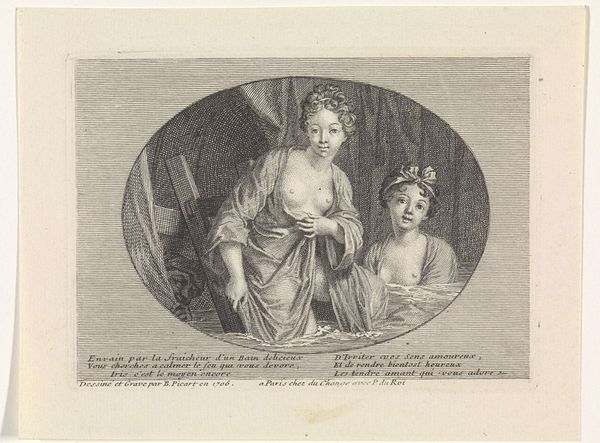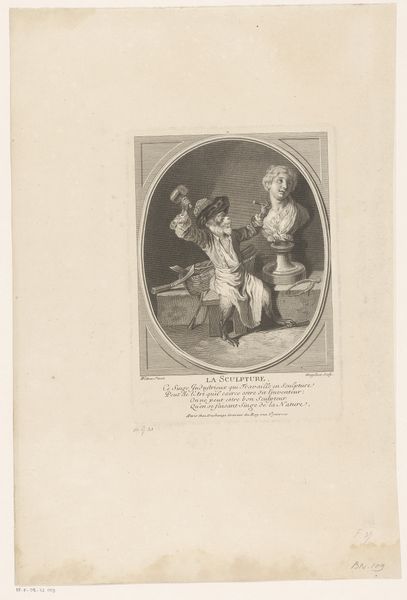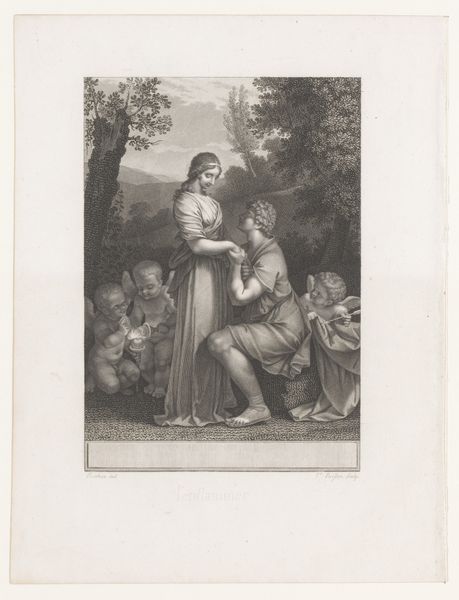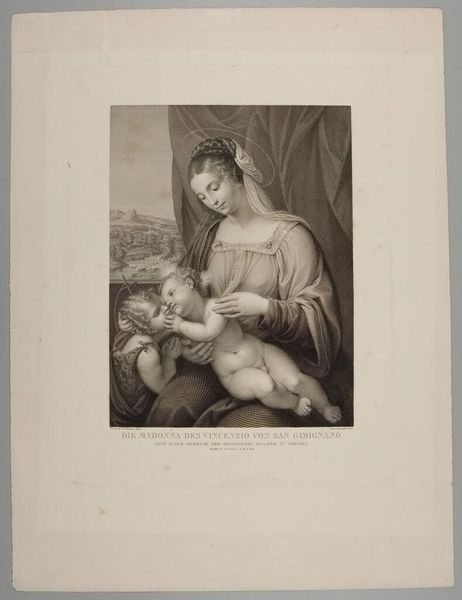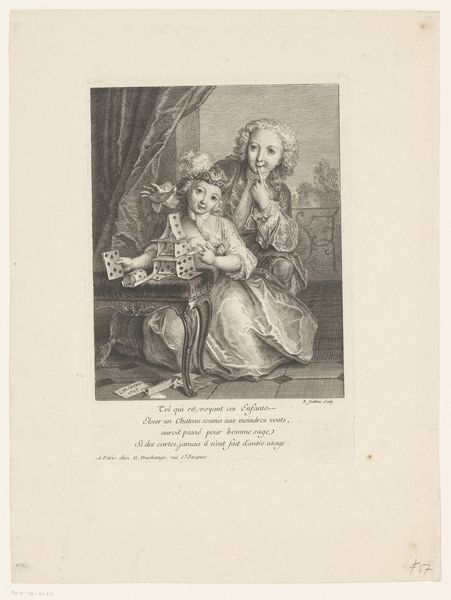
drawing, print, pencil, engraving
#
portrait
#
pencil drawn
#
drawing
#
allegory
# print
#
pencil sketch
#
figuration
#
pencil drawing
#
pencil
#
symbolism
#
academic-art
#
nude
#
engraving
#
erotic-art
Dimensions: height 278 mm, width 218 mm
Copyright: Rijks Museum: Open Domain
Editor: Here we have "Venus en Amor" by Gustav Eilers, created between 1887 and 1903. It's a print, an engraving of a pencil drawing, currently residing at the Rijksmuseum. It has a sort of dreamlike quality... very classical and idealized. What catches your eye when you look at this piece? Curator: You know, it's funny, I almost feel like I'm intruding on a private moment. There's a real intimacy, isn't there? It's interesting how Eilers used the print medium to render such soft, almost blurry, forms. The textural variation creates an atmospheric quality. It feels less about perfect representation and more about evoking a mood or feeling. Makes you wonder what the artist intended, doesn’t it? Editor: Yes, the texture is stunning, and also kind of at odds with what I think of when I think of engravings! It's almost like he's trying to capture something fleeting. There's a vulnerability to it, especially with Venus’ pose. Curator: Absolutely. And it challenges the tradition of the cool, distant goddess. Perhaps Eilers wanted to depict her as both divine and human, a loving mother as much as an icon of beauty. I suppose that maybe a different rendering wouldn't express the mood, or the subject, so strongly. Editor: It really makes you rethink traditional ideas around beauty and motherhood in art. I initially focused on it as simply another symbolist-era take, but now, I see the intention more clearly and there is a powerful human connection here. Curator: Precisely! Art, just like people, often hides its greatest assets within a simple wrapping. Sometimes all we need is time to unwrap it and fully feel what the piece speaks to. What a thought! Editor: It’s so true, I guess in the end it is what one perceives on a personal level, it changes your way of viewing classical allegories in art.
Comments
No comments
Be the first to comment and join the conversation on the ultimate creative platform.
